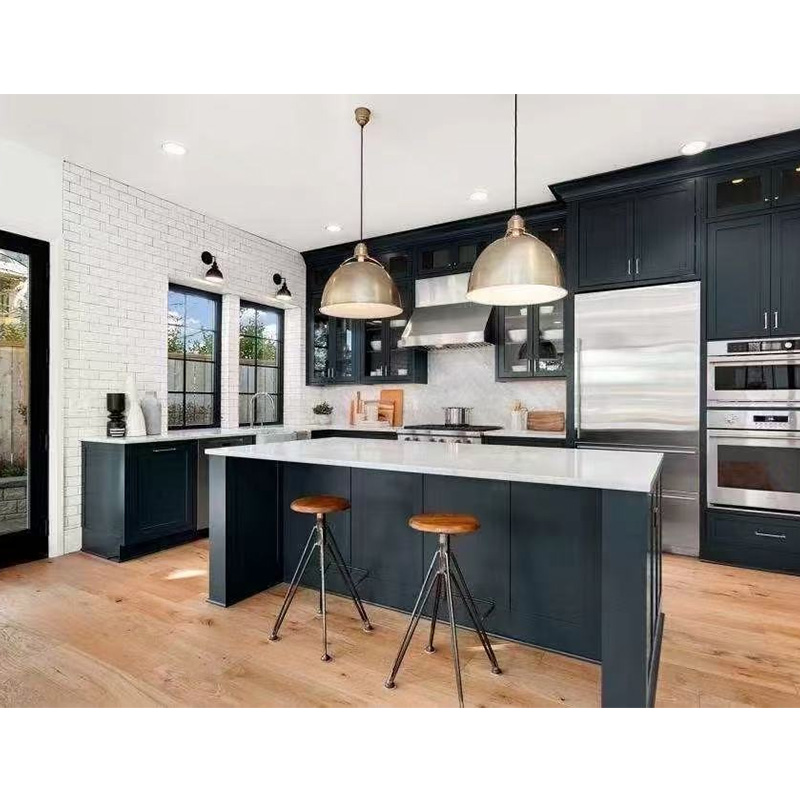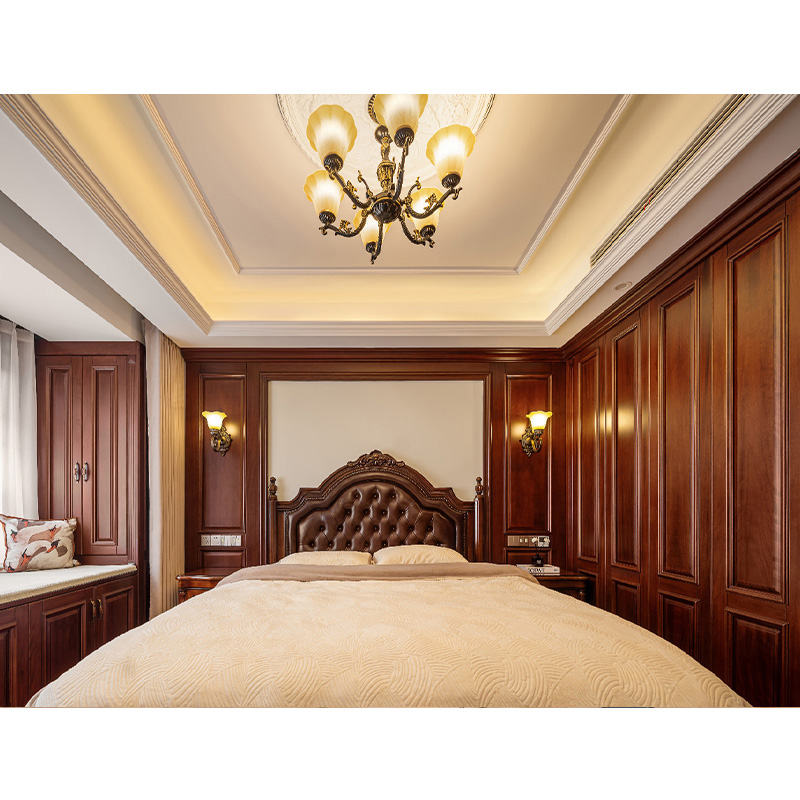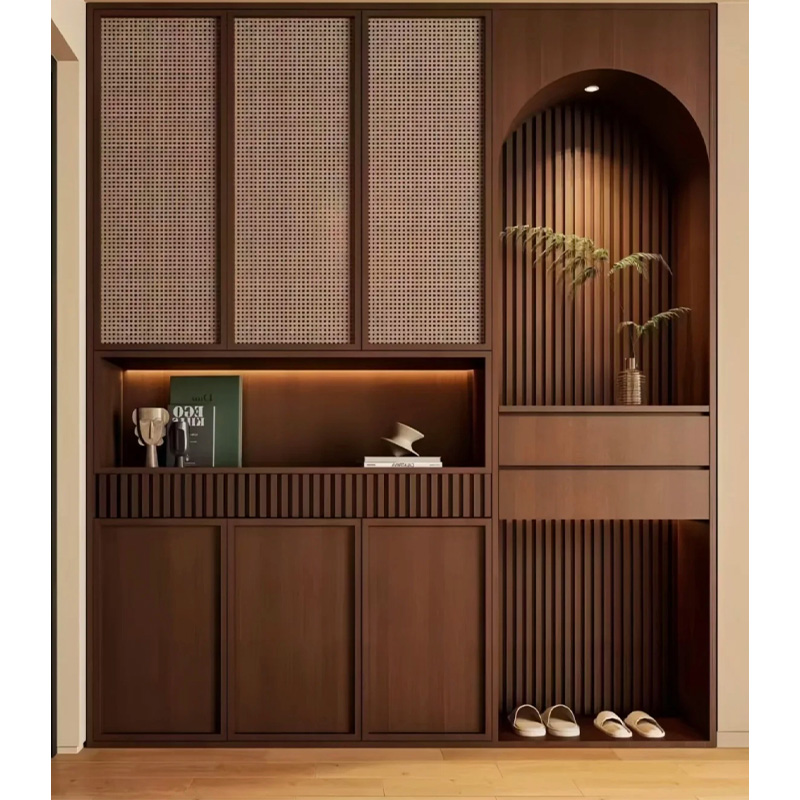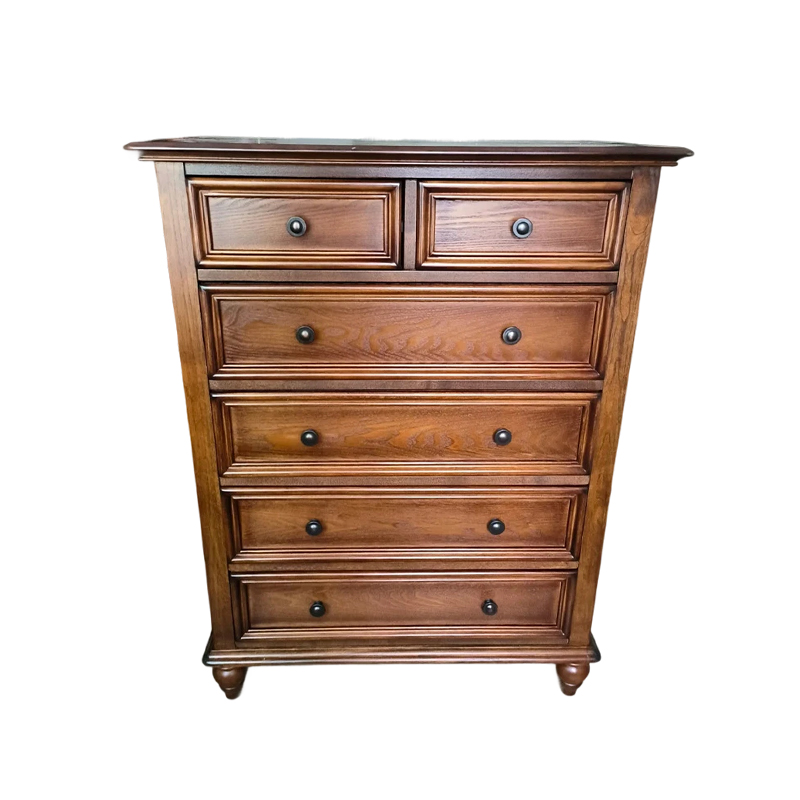How can a wardrobe improve space utilization through a rational layout?
Release Time : 2025-08-05
As one of the most important storage pieces in a bedroom, the rationality of its internal layout directly determines space efficiency and ease of daily use. A wardrobe with a scientific design and clear compartments not only accommodates more clothing but also allows for more efficient access, truly achieving the ideal of "large storage in a small space."
The first principle of a rational layout is to divide functional areas based on clothing type and frequency of use. Different types of clothing require different storage methods. For example, a hanging area is suitable for frequently worn items like coats, shirts, and dresses, keeping them flat and crisp. A stacking area is for foldable items like sweaters, T-shirts, and casual pants, which can be neatly stacked using shelves or drawers. Smaller items like ties, belts, underwear, and socks can be centrally managed in dividers or drawers to avoid clutter. This customized zoning design avoids wasted space, gives each item its own dedicated spot, and significantly improves storage efficiency.
Secondly, effective utilization of vertical space is key to increasing overall storage capacity. Many traditional wardrobe designs overlook overhead space, leaving the upper area unused for extended periods. A well-designed layout, however, fully utilizes every inch of height from floor to ceiling, creating elevated storage compartments or large top drawers for seasonal bedding, luggage, and less-used items. Furthermore, the hanging area is divided into long and short sections, with a short-sleeved section at the top and space for long coats or dresses at the bottom, to avoid mismatched storage space. Some wardrobes also feature adjustable shelves or sliding rails, allowing users to flexibly adjust the height to suit different seasons and clothing needs, truly optimizing the space dynamically.
Furthermore, cleverly utilizing corner space is crucial for increasing utilization. Many bedroom wardrobes are located in corners. If poorly designed, corners can easily become "dead spots," making them difficult to use. Modern wardrobes utilize innovative features like rotating pull-out baskets, angled racks, or folding shelves to transform these previously hard-to-reach spaces into efficient storage areas. Whether storing shoes, bags, or other miscellaneous items, these corner solutions maximize every inch of space and prevent it from going unused.
In addition, the integration of lighting systems further enhances the visibility and user experience of the space. Installing sensor light strips or shelf lights inside the wardrobe automatically illuminates clothing deep within the wardrobe upon opening the door, eliminating the inconvenience of searching due to insufficient light. This not only improves retrieval efficiency but also makes the entire storage process more comfortable and enjoyable. The addition of lighting also enhances the wardrobe's quality, making it not only functional furniture but also a beautiful addition to the bedroom.
It is important to note that a reasonable layout must also balance aesthetics and smooth flow. The opening method of the wardrobe doors, the smooth sliding of the drawers, and the visual transparency of the internal partitions all affect the user experience. Sliding doors save space and are suitable for smaller apartments, while swing doors offer wide opening and closing angles, making it easier to retrieve and place larger items. The interior design avoids visual crowding with excessive partitions and maintains simple, orderly lines, which not only enhances the aesthetics but also facilitates daily maintenance. A well-designed circulation system ensures frequently used items are conveniently located, reducing unnecessary bending and tiptoeing, making storage a breeze.
Finally, environmental protection and durability are crucial elements of a well-designed layout. High-quality materials, a sturdy structure, and wear-resistant hardware ensure that a wardrobe retains its original design functionality over time. The use of environmentally friendly materials ensures indoor air quality, which is particularly important for children's rooms or families with health-conscious needs. A durable wardrobe will not only improve its space utilization over time, but will instead become more efficient with proper maintenance.
In summary, a wardrobe achieves comprehensive space utilization through strategic functional zoning, full utilization of vertical space, innovative corner design, intelligent lighting, and smooth circulation. It is more than just a container for clothing; it is also a builder of order in life. Every well-designed layout represents a deep exploration of the living space and a meticulous refinement of the quality of life. In the future, as people's requirements for living environment continue to increase, the design of wardrobe will continue to develop in a smarter, more humane and more efficient direction, truly becoming an indispensable smart partner in modern home life.
The first principle of a rational layout is to divide functional areas based on clothing type and frequency of use. Different types of clothing require different storage methods. For example, a hanging area is suitable for frequently worn items like coats, shirts, and dresses, keeping them flat and crisp. A stacking area is for foldable items like sweaters, T-shirts, and casual pants, which can be neatly stacked using shelves or drawers. Smaller items like ties, belts, underwear, and socks can be centrally managed in dividers or drawers to avoid clutter. This customized zoning design avoids wasted space, gives each item its own dedicated spot, and significantly improves storage efficiency.
Secondly, effective utilization of vertical space is key to increasing overall storage capacity. Many traditional wardrobe designs overlook overhead space, leaving the upper area unused for extended periods. A well-designed layout, however, fully utilizes every inch of height from floor to ceiling, creating elevated storage compartments or large top drawers for seasonal bedding, luggage, and less-used items. Furthermore, the hanging area is divided into long and short sections, with a short-sleeved section at the top and space for long coats or dresses at the bottom, to avoid mismatched storage space. Some wardrobes also feature adjustable shelves or sliding rails, allowing users to flexibly adjust the height to suit different seasons and clothing needs, truly optimizing the space dynamically.
Furthermore, cleverly utilizing corner space is crucial for increasing utilization. Many bedroom wardrobes are located in corners. If poorly designed, corners can easily become "dead spots," making them difficult to use. Modern wardrobes utilize innovative features like rotating pull-out baskets, angled racks, or folding shelves to transform these previously hard-to-reach spaces into efficient storage areas. Whether storing shoes, bags, or other miscellaneous items, these corner solutions maximize every inch of space and prevent it from going unused.
In addition, the integration of lighting systems further enhances the visibility and user experience of the space. Installing sensor light strips or shelf lights inside the wardrobe automatically illuminates clothing deep within the wardrobe upon opening the door, eliminating the inconvenience of searching due to insufficient light. This not only improves retrieval efficiency but also makes the entire storage process more comfortable and enjoyable. The addition of lighting also enhances the wardrobe's quality, making it not only functional furniture but also a beautiful addition to the bedroom.
It is important to note that a reasonable layout must also balance aesthetics and smooth flow. The opening method of the wardrobe doors, the smooth sliding of the drawers, and the visual transparency of the internal partitions all affect the user experience. Sliding doors save space and are suitable for smaller apartments, while swing doors offer wide opening and closing angles, making it easier to retrieve and place larger items. The interior design avoids visual crowding with excessive partitions and maintains simple, orderly lines, which not only enhances the aesthetics but also facilitates daily maintenance. A well-designed circulation system ensures frequently used items are conveniently located, reducing unnecessary bending and tiptoeing, making storage a breeze.
Finally, environmental protection and durability are crucial elements of a well-designed layout. High-quality materials, a sturdy structure, and wear-resistant hardware ensure that a wardrobe retains its original design functionality over time. The use of environmentally friendly materials ensures indoor air quality, which is particularly important for children's rooms or families with health-conscious needs. A durable wardrobe will not only improve its space utilization over time, but will instead become more efficient with proper maintenance.
In summary, a wardrobe achieves comprehensive space utilization through strategic functional zoning, full utilization of vertical space, innovative corner design, intelligent lighting, and smooth circulation. It is more than just a container for clothing; it is also a builder of order in life. Every well-designed layout represents a deep exploration of the living space and a meticulous refinement of the quality of life. In the future, as people's requirements for living environment continue to increase, the design of wardrobe will continue to develop in a smarter, more humane and more efficient direction, truly becoming an indispensable smart partner in modern home life.







